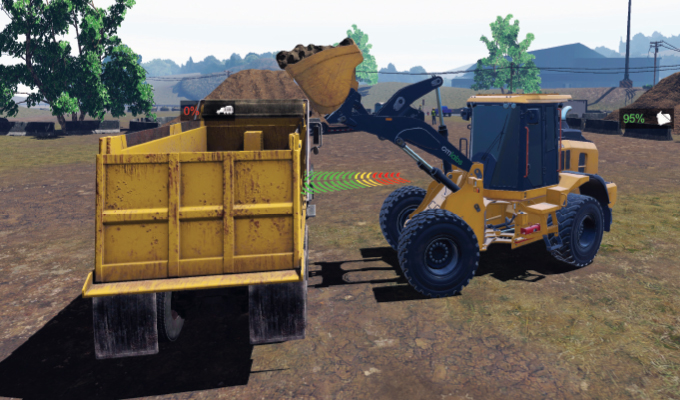By Mala Dewan
According to OSHA, the construction industry suffers from one of the highest incident rates among high-risk industries. Statistics from the Department of Labor indicate that, in a single year, construction workers accounted for 1,008 or 21.1% of work-related fatalities. But the news isn’t all bad as steps are being taken to accelerate improvements. Today trade unions, independent contractors, and industry organizations are placing a growing emphasis on safety.
“People recognize the dangers of this business; we’ve made safety our top priority,” says International Union of Operating Engineers (IUOE) Local 14 training director, Tom Gordon. “Simply put, we’re responsible for the safety of our workforce and people in and around the jobsite, and we take that very seriously.”
MEASURING PERFORMANCE
With such high risks, construction is today being held to some of the most stringent workplace safety standards. And to further protect workers, many companies are adopting metrics to measure themselves against OSHA as well as internal standards. These metrics generally include:
- Number and frequency of incidents
- Number and frequency of “near miss” incidents
- Number of severe incidents resulting in hospitalization or fatalities
- Amount of time lost to injury
- Total recordable incident rate
- Absent rates
- Equipment breakdown
Despite such steps, dangers remain. The Electronic Library of Construction Occupational Safety & Health (ELCOSH) reports that while construction site injuries account for 6% to 9% of project costs, safety and health programs account for only 2.5% of project costs.
Measurable and sustained improvement is only realized through commitment. And a growing number throughout the industry are demonstrating this by establishing and monitoring key metrics for health and safety. Moreover, these same companies are doubling down by investing in the resources to manage, track, and enforce best safety practices in the workplace while implementing formal training programs to administer and evolve these standards.
SIMULATION PROVIDES SUPPORT
Simulation directly addresses health and safety metrics by reducing injury, while allowing trainers to virtually capture unsafe equipment operation. Built-in performance metrics can track everything from collisions and contacts with powerlines, personnel, vehicles, and other hazards. This provides the succinct, immediate, and objective feedback to avoid such dangers on the physical construction site.
Leveraging simulation in your training program allows operators to gain familiarity and confidence in a safe, low-stress environment before taking control in the field.
“Everything revolves around safety,” explains IUOE Local 926 safety and training director Anthony Nash. “Our members come to learn proper set up, what to look for, and what to anticipate in the field. Experiencing these things in a controlled setting under an instructor’s watchful eye saves significant time, money, and possibly lives.”
Greg Brown, inspector and trainer for Crane Industry Services, LLC, says that an added benefit is the ability to prepare operators for extreme conditions not easily replicated in field training. “We can challenge students with a wide variety of tasks, distractions, and difficult conditions such as high winds, rain, and so on without creating danger in or around the jobsite. And simulators aren’t just for beginners. Their flexibility allows us to teach customized and advanced operations to even the most experienced operators.”
Accidents aren’t the only job-related hazards that operators face. A paper from the US National Library of Medicine National Institutes of Health contends that exposure to dust, fumes, the sedentary nature of their jobs, mental stress, and long hours of temperature and sun exposure put operators at further health risks. Lessening training time spent on physical equipment reduces exposure to adverse conditions. As an added bonus, limiting machine service hours also reduces breakdowns and extends equipment life.
INVESTMENT YIELDS RESULTS
While improvements are being made, construction remains an inherently dangerous occupation. Fortunately, the industry continues to pursue, advance, and invest in employee health and safety. And while employers are clearly obligated to protect their workforce, formal programs are shown to contribute to a strong bottom line. From employee absence to rising insurance premiums, workers compensation, medical bills, time delays, and even litigation, worksite injuries come at a high price.
According to the National Safety Council, construction companies can save an average of $32,000 for each medically consulted injury they avoid. Similarly, OSHA reports that construction companies can save $4 to $6 in indirect costs for every dollar invested in direct costs by evading an injury in the workplace.
Irrespective of motivation, construction companies are putting programs in place to ensure a safer work environment; and Key Performance Indicators (KPIs) help track and measure progress on outlined objectives. Regardless of how long or detailed that list is, training is a common thread that runs through these indicators.
CLOSING THOUGHT
As equipment becomes increasingly powerful and complex, operator training takes on a whole new level of importance. And simulation-based training is shown to offer a substantial return on investment in terms of time, retention, and effectiveness.
About The Author
Mala Dewan is a product marketing manager for CM Labs Simulations, whose mission is to simulate the world to make operations safe and efficient, by connecting people, processes, and equipment design. The company builds simulation-based solutions to help clients design advanced equipment and prepare for skilled operations. Through its Vortexˇ Studio platform, CM Labs provides capabilities for training simulators, mission rehearsal, virtual prototyping, and testing. Clients include OETIO, IUOE, Kiewit, Liebherr, Mammoet, Manitowoc, NASA, and more than 100 other world-class companies, OEMs, equipment operators, and trades training organizations. CM Labs’ vision is to be the leader in digital transformation, from machine design to training. For more, visit www.cm-labs.com.
Modern Contractor Solutions, May 2021
Did you enjoy this article?
Subscribe to the FREE Digital Edition of Modern Contractor Solutions magazine.



